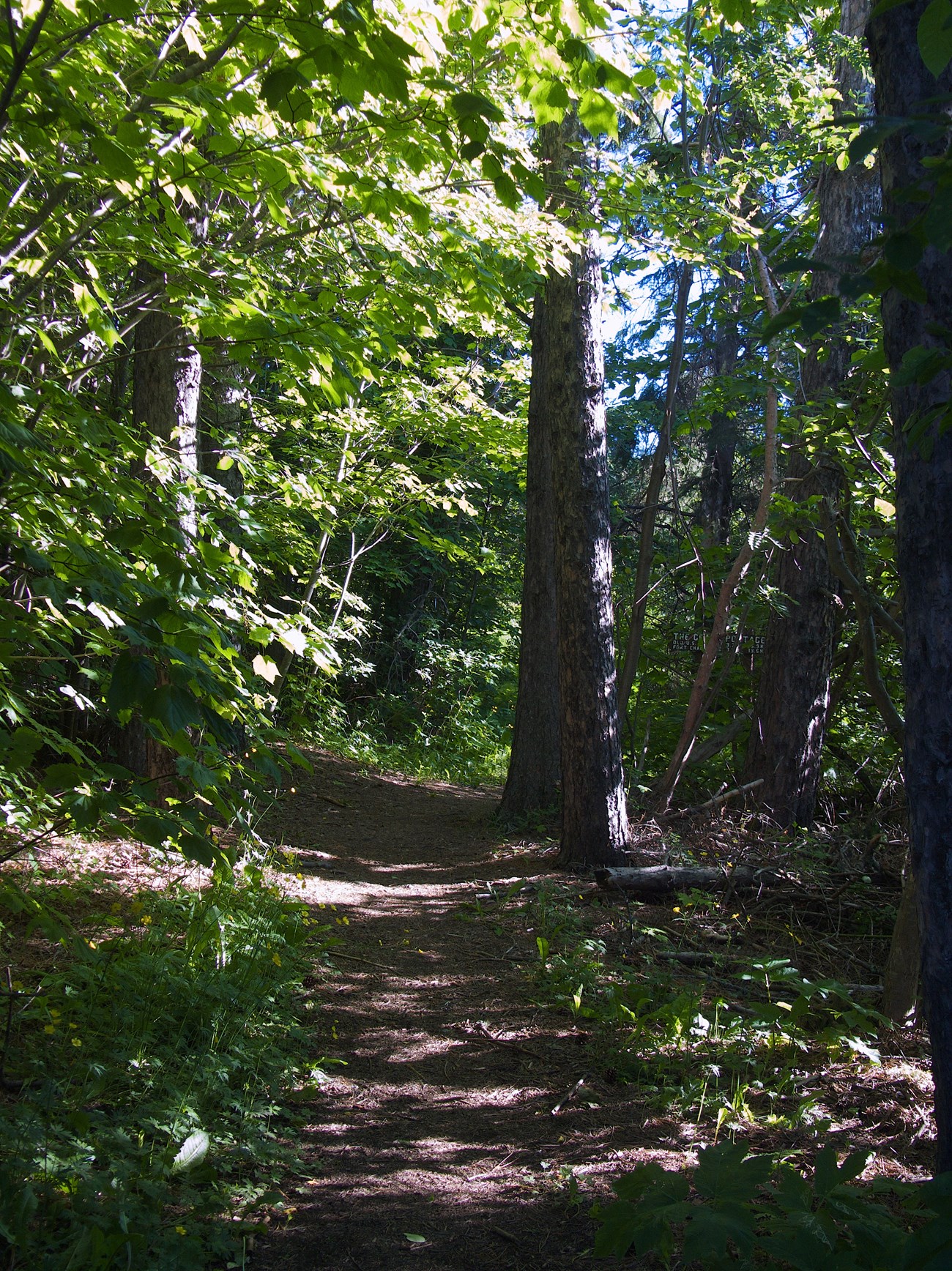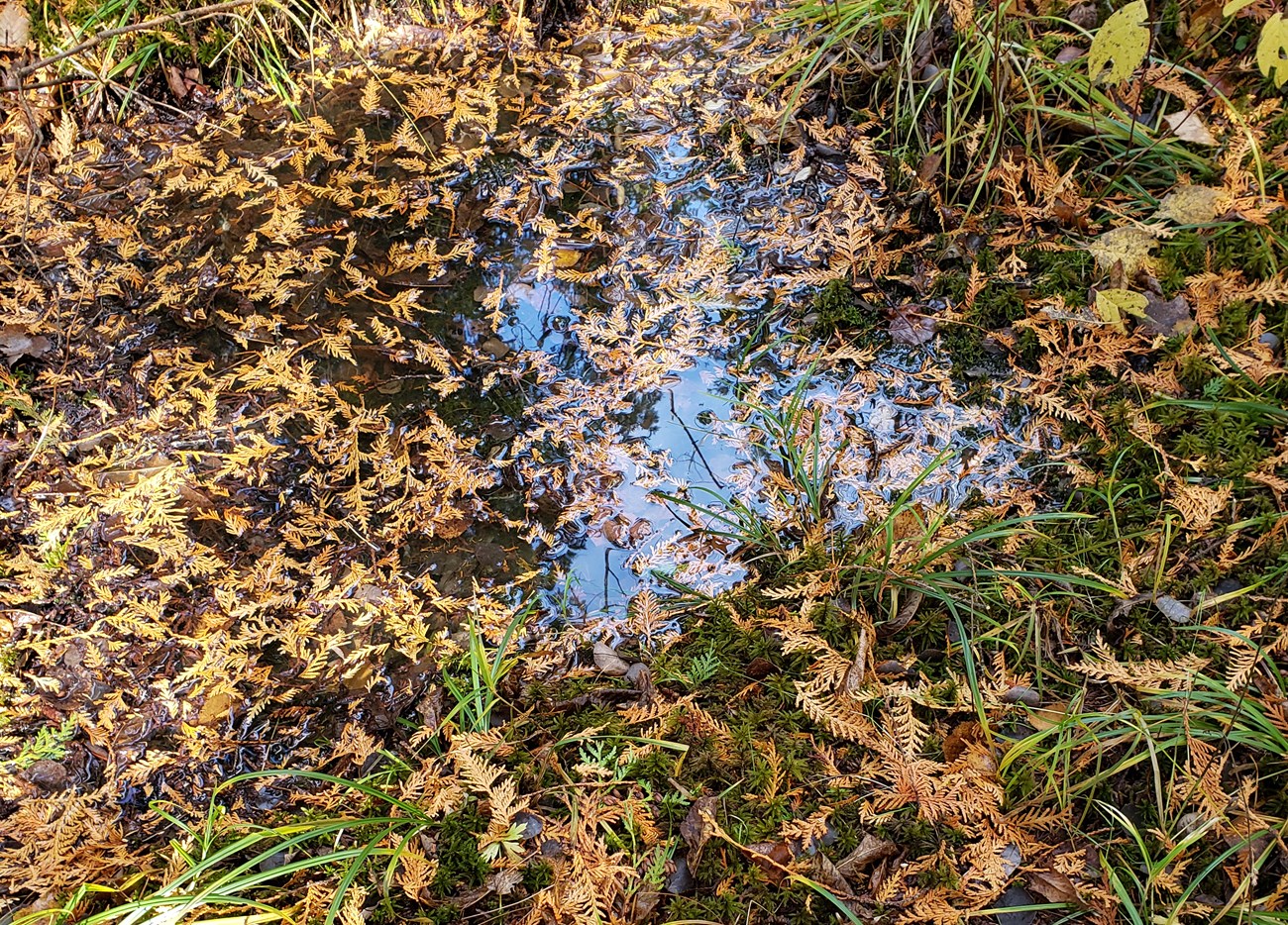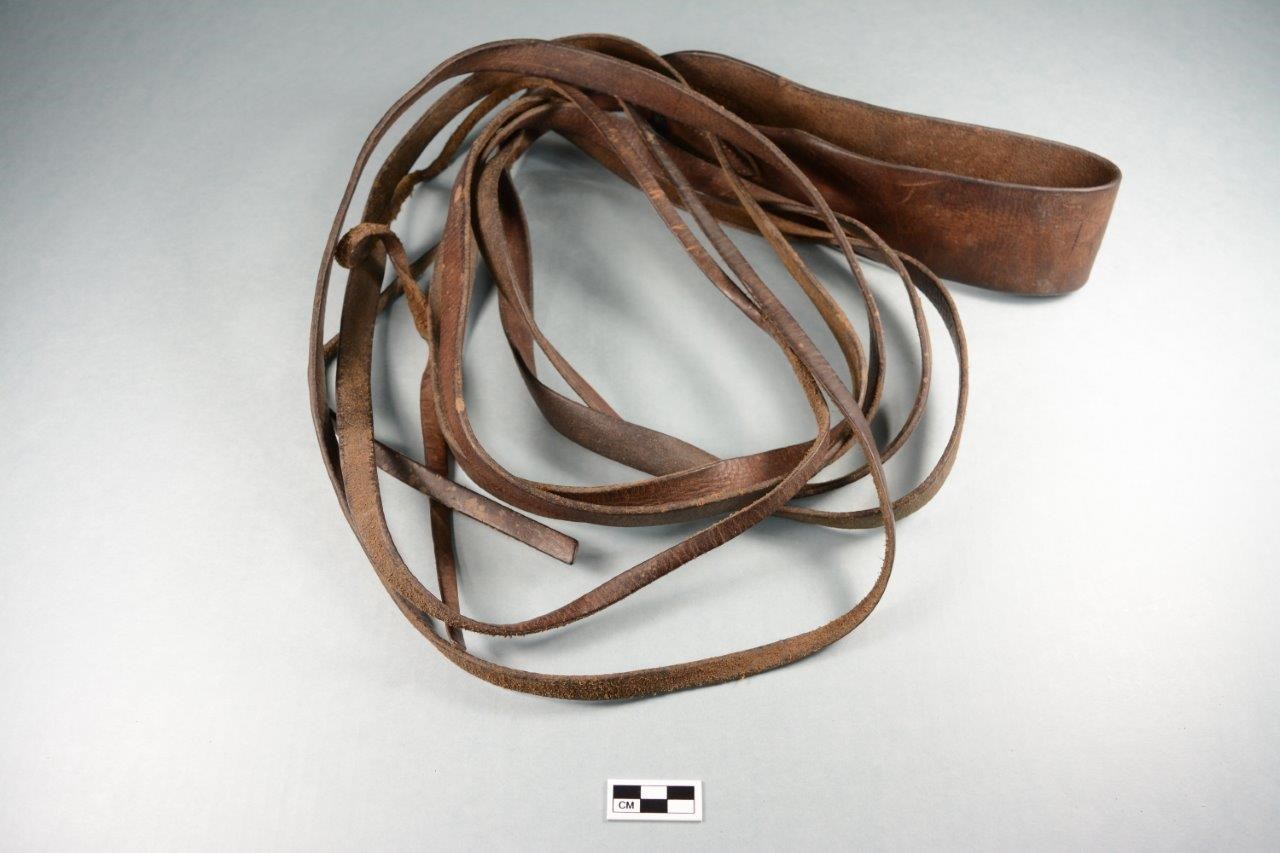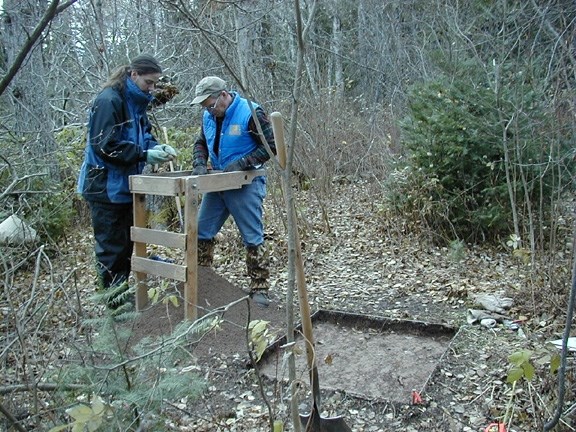Last updated: December 10, 2024
Article
The Porters, the Canoe Landing, and the Fountain Pose
Situated on the north shores of Lake Superior, near the United States-Canadian border, the Grand Portage was a significant setting for traditional Ojibwe heritage and cultural practices for several centuries. The portage facilitated travel from the Grand Portage Bay to the Pigeon River and points in between, establishing the bay as a meeting place and annual summer rendezvous. Previously an area characterized by a mosaic of forest stands, the arrival of Europeans in the mid-eighteenth century heralded the beginning of logging and clearing. The Grand Portage trail, an overland link between the Pigeon River and Lake Superior, attracted European and Indigenous traders from all directions.

NPS photo
Establishing the Fur Trade
A sudden fashion for beaver fur hats swept Europe in the eighteenth century, catapulting the fur trade into prominence. The French began using the portage as early as 1731. They likely constructed the first fur trade structures on the Grand Portage landing in 1732. The French controlled the route for several decades, until the British sent trade expeditions through the portage in 1761 and began building forts in 1768. The rivalries between British and French traders grew so fierce that British troops intervened in 1778 to maintain order.
Several years of conflict and economic competition between French and British factions resulted in a partnership, the North West Company (NWC) in 1779. The rival traders agreed to establish a monopolistic firm in opposition to the all-powerful Hudson’s Bay Company (HBC). Thanks to the rise of the NWC and the many improvements it made to the trail, a ten-day journey to cross the portage turned into a five-day trek. During peak summer activity, between 1780 and 1804, hundreds of men made thousands of trips that shuttled goods and supplies up the portage and brought furs back.
In 1787, the NWC built Fort Charlotte at the Pigeon River canoe landing, a convenient place for fur traders to remove boats from the river near the end of the trail. By the nineteenth century, the United States imposed fees and other restrictions on foreigners operating in “American” territory. The NWC moved its headquarters from Fort Charlotte to Fort William in Ontario, Canada in 1805. Immediately after this withdrawal, traffic on the trail sharply declined and the depot was described as ruins in 1822.
Life on the Portage
Traveling the portage was very challenging, since it passes through some of the most rugged and densely wooded terrain in Minnesota. The trail is a narrow footpath, threading along ridges or through gaps, skirting hills and swamps, winding around rocks and trees, and crossing streams on the backs of beaver dams. Archeologists analyze old encampments, watering stations, and other resting places to learn about the experience of portaging by early voyageurs.
Poses were large clearings where camping and other regrouping activities took place. They had names like “the Meadow”, “the Fountain”, and “the Parting Trees". Poses were generally one-third to one-half of a mile apart, depending upon the difficulty of the terrain: further apart in dry, level areas and closer together in marshes, steep slopes, or slippery rocks. While some poses functioned as temporary depots and places for resting, getting water, messing, and camping, others served as caches, overlooks, or ad hoc burial grounds. Some poses were hubs for intersecting trails or hunting, fishing, or woodcutting camps. At peak use in the 1790s, the Grand Portage was said to have 16 poses.

NPS photo / G.M. Spoto
According to historic records, the Fountain pose, also referred to as a “little mud hole called a spring” is located at about the halfway point on the portage. In the eighteenth century, the words “spring” and “fountain” were used interchangeably and often just referred to a pool of water. This dismal watering station obscured by woody vegetation tells us of the poor quality of life experienced by the voyageurs. Early travelers relied upon potable water pooled in tree-fall pits near the portage trail for drinking water. Over time, as use of the portage and reliance on watering holes increased, porters enlarged some of the pits to store more water. This provided a significant natural source of water in a demanding stretch of the portage where no streams crossed. Travelers used the Fountain pose for a stopping place, campsite, and watering hole. Archeologists discovered a series of four water-filled pits on either side of the trail, likely created by uprooted trees during windstorm events. Metal detector surveys at the Fountain yielded a historic artifact scatter, including hand-wrought nails and a tinkler cone that attached to ceremonial clothing.

NPS photo
The Fort Charlotte Pigeon River landing reveals an assortment of items worn and carried by the porters, attesting to the difficult conditions in which they lived. The fur trade was rough, dirty, and demanding. Men in the trade often traveled great distances on land and water where grueling schedules, poor diets, and exposure to the elements eroded their strength. Because of their heavy packs, porters often could not carry water or food with them. The handling and distribution of food among fur trade personnel tended to reflect and reinforce one’s social status. In good times, porters typically ate one-pot meals like soups and stews that were boiled in kettles set on hot coals or suspended over low flames. In bad times, they were on their own. These conditions were equally hard on their wardrobes, as buttons were torn from shirts and breeches and buckles from shoes.

NPS photo
Archeologists excavating at the Fort Charlotte Pigeon River canoe landing recovered 12,500 French-era fur trade artifacts. Many of them related to transportation, such as metal animal-shoes, wooden toggles and paddles and a leather portage strap. They also found wood-metal objects such as knives or curry combs for currying horses and scraping hair and fat from animal hides.
Historical accounts suggest the typical load for a porter on a portage consisted of two pieces of freight, together weighing between 160 and 200 pounds. The ends of the portage strings were attached to the first piece, either a pack, keg, trunk, or some other carrying mechanism. This was adjusted so that when the porter stooped, the piece rested on the small of his back. The second piece was then placed on top of the first so that its weight was centered between the porter’s shoulders, near the back of his neck. With the cargo properly positioned, the force of the load was supported by the sling placed at the top of the forehead and by one’s hands clasping the sling on either side. Bent forward with his slung cargo, the porter advanced at a very fast walk or slow trot with flexed knees. Two pieces were said to be carried with greater ease than one on account of the direction of the weight on the body.

NPS photo
Underwater archeologists found a leather belt or strap fragment that appears to be a portage sling near the canoe landing. The crude slits distinguish this belt as a utilitarian item, as opposed to just an everyday belt worn by one of the traders passing through. The NWC had several such devices in stock, sometimes referred to as portage collars, portage straps, packing straps, or carrying straps, all of which consisted of a broad central piece of leather that rests on the forehead with two long suspended tags, or “strings” that attach to the cargo to be carried. The lower suspended parts of the sling were made from a finer leather that facilitated the repetitive act of tying and untying.

NPS photo
Probably no one who ever launched or landed a canoe at the Pigeon River landing, or stopped for a water break at the Fountain posé, thought their adventures would someday be studied by archeologists. Most porters did not leave much behind, but the collective behavior of multiple people engaging in similar activities over time produced an accumulation of cultural objects at these sites. The objects found offshore at the Fort Charlotte canoe landing comprise one of the largest and most diverse collections of fur-trade artifacts ever recovered. Archeological evidence along the portage speaks volumes about the history, materials, tools, and technology of the North American fur trade. But perhaps most of all, archeology teaches us about the laborers who made up the backbone of this international exchange and transportation system who would otherwise be forgotten.
Sources
Birk, Douglas A. The Hudson Bay Trail: A Study of Nineteenth Century Travel Routes Between Grand Portage, Minnesota, and Fort William, Ontario. The Institute for Minnesota Archaeology Reports of Investigations. No. 466, 1998
Birk, Douglas A. Secrets from the River: Offshore Archeology at the Fort Charlotte-Pigeon River Canoe Landings, Grand Portage National Monument. National Park Service, Midwest Archeological Center, 2013
Birk, Douglas A. and David J. Cooper. Grand Portage National Monument: Grand Portage Archeological Survey Project, 2000 Progress Report. The Institute for Minnesota Archaeology. No. 603, 2001
Woolworth, Alan. Archaeological Excavations at the North West Company's Depot, Grand Portage, Minnesota in 1970-71. Minnesota Historical Society. Report on file, National Park Service, Midwest Archeological Center, 1975
